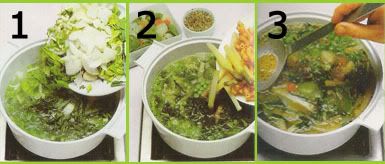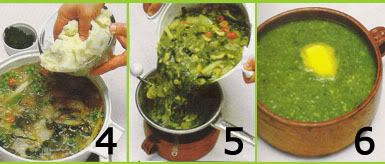Combining Leftovers for a Fresh-Tasting Puree


Pureeing techniques, which are designed to amalgamate flavors and textures, can be applied successfully to a collection of leftover vegetables to make a fresh-tasting soup that quite bellies its humble beginnings. Since most vegetables combine well, the contents of your larder or refrigerator can determine the recipe. The soup demonstrated here is made from both cooked and raw leftovers.
If the cooked vegetables for a soup of leftovers were tossed in butter for their first appearance at table, scrape off as much as the butter as possible before adding the vegetables to the soup. Any remaining butter will rinse to the surface of the liquid during cooking and should then be skimmed off.
Two essential ingredients are raw aromatic vegetables, which help to unify the flavors and starchy element to stabilize the puree. Onions, celery, garlic, leek greens or spring onions in any combination will provide a strong aromatic flavor base. The starchy element may be leftover cooked potatoes, rice or pasta; in the absence of these, thicken the soup with a handful of fresh breadcrumbs or some croutons.
Do not overcook the soup. Start by simmering raw aromatic and leaf vegetables, since they need the longest cooking. Next, add any quick-cooking raw vegetables—such as the peas here—together with firm-textured cooked vegetables. Add puree vegetables—mashed potatoes or spinach, for example—at the last minute. After pureeing the soup you can add an enrichment of fresh butter or cream.


No comments:
Post a Comment